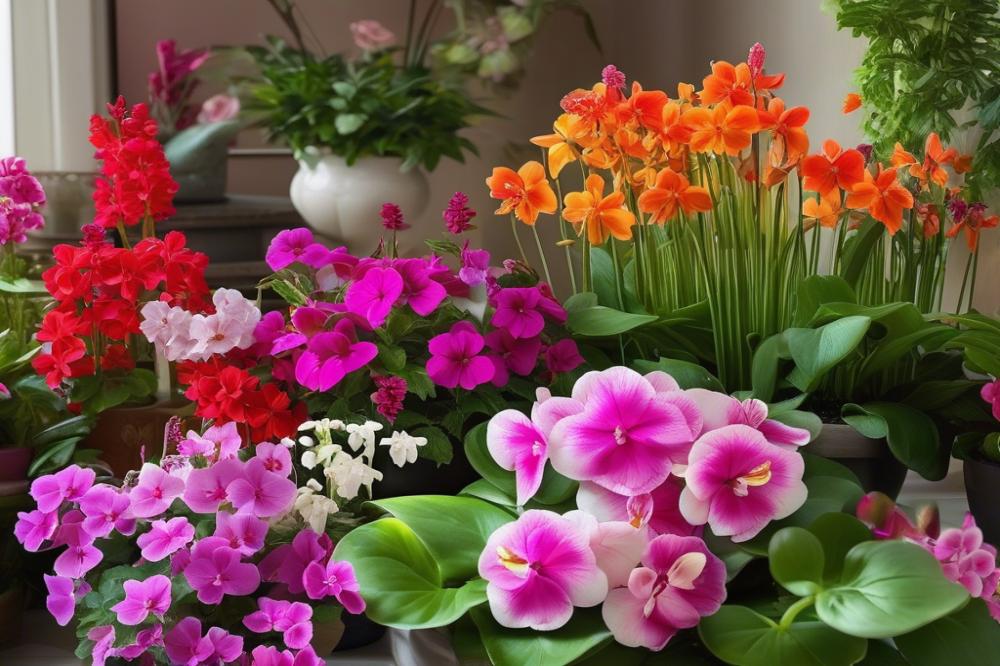Understanding the Beauty of Roses
Roses are often considered the queen of flowers, capturing the hearts of gardeners and flower lovers everywhere. The allure of these beautiful blooms can transform any garden into a stunning landscape. Their elegance and variety entice many to try their hand at cultivation. While everything seems perfect, growing roses comes with its own set of challenges.
Many aspects of rose care demand attention. Quality soil is essential for healthy growth. Additionally, knowing the right amount of sunlight can make a big difference. pruning, watering, and choosing the right fertilizer all contribute to a thriving rose bush. Different varieties of roses also thrive better in specific climates, affecting your gardening choices.
People often overlook the common pests and diseases that can invade their rose gardens. These issues can cause not only physical damage but also emotional distress for those invested in their plants. Avoiding mistakes is crucial for anyone wishing to enjoy the vibrant beauty of roses.
This article aims to shed light on the top mistakes to avoid when cultivating these special plants. By addressing common pitfalls, we hope to guide gardeners toward a more successful experience. With the right knowledge, anyone can enjoy the delightful blooms that roses bring.
Common Mistakes in planting Roses

Choosing the wrong planting site is a major error novice gardeners often make. Roses thrive in spots that receive at least six hours of sunlight each day. If you select a shaded area, your plants will struggle. Poor placement can lead to stunted growth and increased vulnerability to pests and diseases. Look for clear, open spaces rather than tucked-away corners.
Inevitably, ignoring climate and variety compatibility can lead to frustration. Different types of roses have unique needs based on their native environments. Some varieties prefer cooler temperatures, while others flourish in warmer climates. Always research the specific needs of the rose varieties you plan to grow. This knowledge is vital to a healthy garden.
Errors in planting depth and spacing can create further problems. If you bury the roots too deeply, the plant may suffer from insufficient air circulation. Conversely, if you plant too shallowly, the roots will struggle to establish themselves. Additionally, spacing plays a vital role. Giving each bush enough room allows proper airflow and decreases disease risk. Remember, too little space between plants can lead to issues with watering and nutrient competition.
Soil quality also matters greatly. Roses prefer rich, well-draining soil that allows roots to spread easily. Failing to amend your soil can result in weak and unhealthy plants. It’s essential to add compost or fertilizer for the best results. Pay attention to the nutrients your roses need throughout the growing season.
Understanding the importance of proper care during planting is crucial. Watering must be consistent, especially in the early stages. Deep watering encourages root development, so avoid shallow, frequent applications. Monitoring your roses regularly for signs of stress should be part of your routine. With a little extra care upfront, your bushes will reward you for years to come.
Soil Quality and Preparation Mistakes

Overlooking soil drainage can be a costly error. Roses thrive in well-draining soil, so pooling water can lead to root rot. It’s easy to dismiss composition, but the right mix of sand, silt, and clay is crucial.
Testing the soil for pH and essential nutrients is often neglected. A balanced pH level helps roses absorb nutrients effectively. Without this step, you may not know which fertilizer to use when planting.
Amending the soil before planting is vital. Adding organic matter boosts structure and nutrient levels. Neglecting this preparation can result in weak plants that struggle with pests and diseases.
Consider how sunlight impacts your garden. The right location is just as important as soil quality. Roses need adequate sunlight to flourish; otherwise, they may become leggy and fail to produce blooms.
Watering plays a significant role too. While too little water can harm plants, overwatering is detrimental as well. Finding a balance will help maintain healthy roots.
Different varieties of roses have unique requirements. Some may prefer slightly acidic soil, while others do well in neutral conditions. Tailoring your approach to each type ensures the best results.
Don’t forget about the climate where you live. Certain regions require additional care during extreme weather. Understanding your local environment helps you make better choices.
Watering Errors

Inconsistent Watering Practices
Many gardeners make the mistake of watering their roses inconsistently. This erratic schedule can lead to shock in the plants. Roses thrive on routine, and they need a reliable amount of hydration. When water is provided sporadically, roots can be stressed, making the plant vulnerable to pests and diseases. Establishing a consistent watering schedule will promote strong growth.
Overwatering vs. Underwatering
Finding the right balance between too much and too little water can be tricky. Overwatering can drown the roots, leading to root rot. On the other hand, underwatering causes wilting and stunted growth. Monitor the soil’s moisture regularly to avoid these pitfalls. A good rule of thumb is to stick your finger into the soil an inch deep. If it feels dry, it’s time to water. Always adapt your approach based on the climate and season.
Timing and Methods of Watering
When you water is just as important as how much you apply. Early morning is often the best time to hydrate your roses. Watering in the evening can leave plants damp overnight, inviting fungal diseases. Use methods like drip irrigation or soaker hoses to deliver water directly to the roots. This minimizes moisture on the foliage, reducing the risk of pest infestations. Remember that roses prefer moist but well-drained soil quality for optimal health.
Sunlight Exposure Mistakes

Planting roses in inadequate light conditions can lead to significant problems. Healthy roses thrive on sunlight. Most varieties need at least six hours of direct sun each day. Without enough light, you might find your blooms sparse and colors faded. It is frustrating, but it happens often.
Understanding the sunlight demands for different types of roses is critical. Not all varieties are the same. Some can tolerate partial shade, while others require full sun to perform their best. Failing to research these needs can lead to disappointment. Always look into the specific requirements for the type you wish to grow.
Nearby structures or plants can create unwanted shading. Tall fences and large trees might block sunlight, stunting growth. If your roses become overshadowed, they will struggle to thrive. Make sure to observe how shadows shift throughout the day. This awareness is key to choosing the best spot for your beloved blooms.
Watering roses is equally as important as sunlight. While roses need adequate moisture, too much shade can lead to soggy roots. Good soil quality helps drainage but can be compromised if shaded. Be mindful of your garden layout when planting. A well-structured plan will help avoid future oversight.
Remember that pests and diseases can also be attracted to stressed plants. Weak, poorly exposed roses are prime targets for these problems. By ensuring proper light exposure, you can reduce these risks. This adds a layer of protection that all gardeners desire.
Choosing the right fertilizer can help nourish your roses. However, nutrients can only be effective if your plants receive sufficient sunlight. If they aren’t receiving it, all the fertilizer in the world won’t matter. Focus on providing the proper conditions first, and your plants will repay you with vibrant blooms.
In a suitable climate, you have an even better chance of growing successful roses. Some regions naturally provide optimal sunlight. Take advantage of this by selecting varieties that match your environment. Understanding these factors is essential for flourishing roses in your garden.
pruning and Maintenance Errors
Timing and technique are critical when pruning roses. Making cuts too early or late can lead to poor growth. Pruning should ideally happen just before the growing season. Each variety has its own needs, so do some research to find the best time. Use sharp tools for clean cuts. This helps the plant heal faster.
Over-pruning is another common mistake. Removing too many stems and leaves can stress the plant. Each rose needs a balance, so trim only what’s necessary. On the other hand, under-pruning can create dense growth, hiding potential pests and diseases. Keeping a close eye on your plants is essential to determine the right level of pruning.
Regular maintenance is vital for healthy roses. Some people forget to check their plants frequently. Set a routine for watering, checking soil quality, and ensuring proper sunlight. Fertilizer also contributes to a rose’s health, but applying too much can cause damage. Each task plays a role in their overall growth.
Neglecting these maintenance routines can lead to significant problems. Pests can take hold if you do not inspect leaves and stems often. Diseases might develop in a neglected garden. A proactive approach will keep your roses vibrant and blooming beautifully. The effort always pays off when you witness their unique flowers.
Understanding the variety of roses you are planting is key. Different types have different needs based on climate. Knowing how much sunlight they require can influence their growth. If you adapt your care practices to meet these needs, success will follow.
Dealing with Pests and Diseases
Ignoring early signs of pest infestations can lead to disaster. Pests can devastate your plants if left unchecked. It starts with a few tiny bugs, and before you know it, they’ve multiplied. Regularly inspect your roses for unusual spots or missing leaves. Catching these issues early can save you a lot of trouble.
Not using appropriate pest control methods is another common error. Some people might reach for harsh chemicals right away. Alternatives like natural pesticides or insecticidal soap often work just as well without harming beneficial insects. Choose a method that’s safe for your garden and the environment. Always follow the directions on any products you use to avoid damaging your plants.
Failing to identify common rose diseases can hinder your garden’s success. Diseases like black spot or powdery mildew are serious threats. They can spread quickly, especially in warm and humid climates. Always familiarize yourself with the symptoms of these diseases to spot them as soon as possible. Early recognition helps in taking effective action against them.
Pests aren’t the only worry; diseases can ruin your flowers too. Pruning regularly helps improve air circulation and can reduce the chance of disease. Healthy soil quality and proper sunlight also play significant roles. Make sure you’re watering appropriately and using the right fertilizer for the types of roses you have. Different varieties may have unique needs, so stay informed!
Check your plants frequently. Even a well-cared-for rose garden can face challenges from pests and diseases. Be proactive rather than reactive. Establish a consistent care routine to monitor their health. If you notice even the slightest issue, address it immediately. Your plants will thank you with beautiful blooms throughout the growing season.
Fertilizer Mismanagement
For anyone excited about roses, fertilizer mismanagement can be a significant setback. Timing is crucial when feeding your plants. Fertilizing too early in the spring can lead to excessive growth at the expense of blooms. On the flip side, waiting too long might mean missing a chance for vibrant flowers.
Over-fertilizing presents another common issue. While it might seem logical that more fertilizer equals healthier plants, that’s not always the case. Excess nutrients can actually burn roots and hinder growth. Pests and diseases can take advantage of weakened systems, leading to further problems.
Choosing the wrong type of fertilizer can also create major headaches. Not all fertilizers are created equal, especially for roses. These beautiful plants thrive on specific nutrient combinations. A balanced approach is essential for their overall health. Look for fertilizers with appropriate ratios of nitrogen, phosphorus, and potassium.
Neglecting balanced nutrition can leave plants vulnerable. Roses need various nutrients throughout their growth stages. The soil quality plays a role in how well these nutrients are absorbed. Regular soil testing can help determine what your plants truly need.
Different varieties may require slightly different treatments. Consider the climate in your area as well. Local weather can affect how often you should fertilize. By paying attention to these details, you can provide roses with a solid foundation for thriving.
Remember, proper watering and sunlight are just as crucial as fertilizer. All these aspects work together to nurture plant health. With the right balance, your roses will flourish like you’ve always dreamed.
Final Thoughts on growing roses
Recapping the importance of avoiding common mistakes is essential in ensuring a thriving garden. Each error, whether related to planting, watering, or pruning, can lead to a less than optimal outcome. Recognizing these pitfalls can pave the way for success. Roses, in their beauty and diversity, require careful attention.
Encouragement for successful cultivation of these flowers comes down to learning from experiences. Every gardener faces challenges, but perseverance is key. With the right knowledge and a bit of effort, anyone can achieve a stunning display of blooms. Don’t shy away from seeking help and trying new methods.
Patience remains a fundamental quality in gardening. Flowers do not bloom overnight, and gardens grow at their own pace. Embrace the learning process, as each season teaches valuable lessons. Celebrate small victories, and remember that every mistake is an opportunity to improve. Enjoy the journey of growing these magnificent plants.



